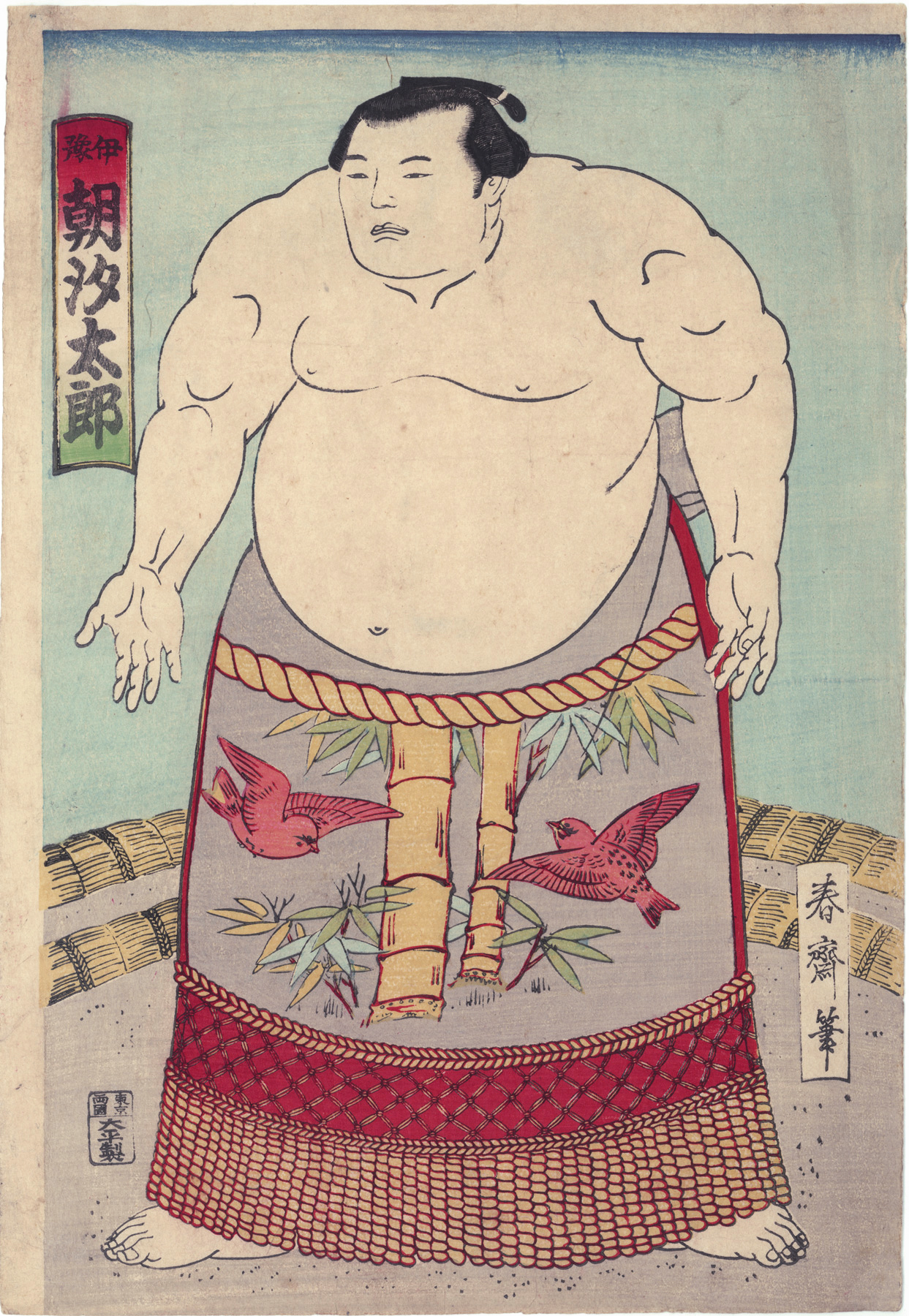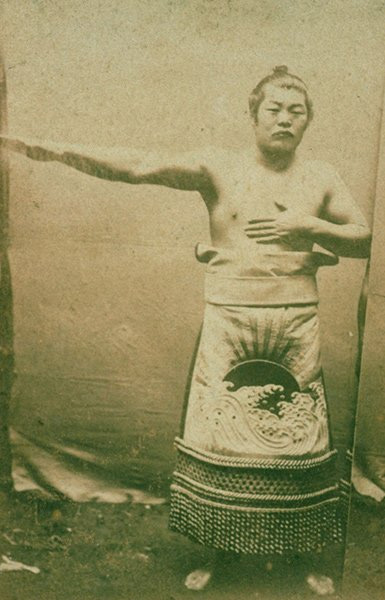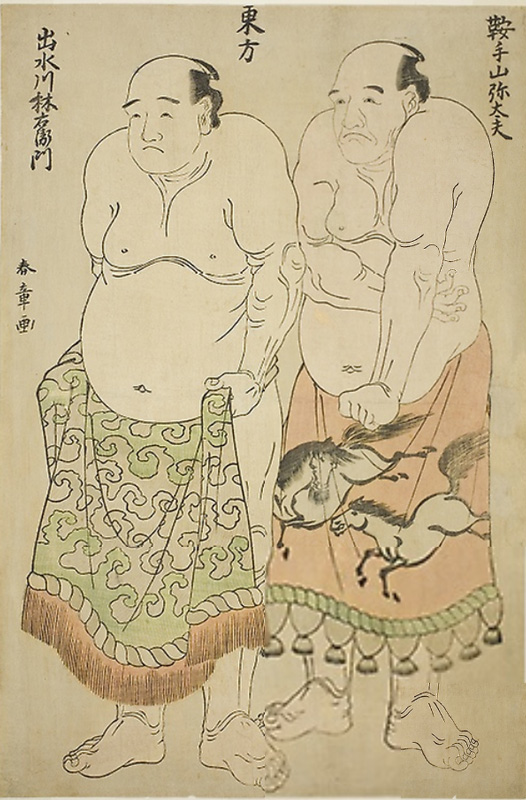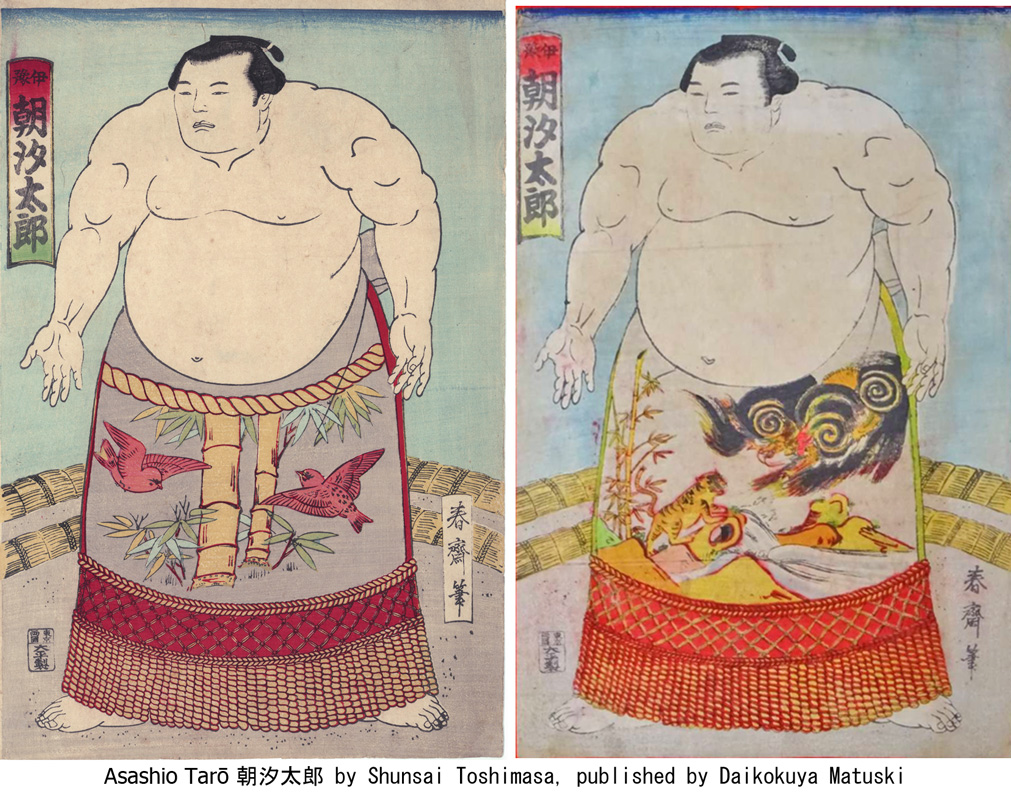About This Print
Asashio Tarō I (1864 - 1920) while performing the dohyo-iri, a ring-entering ceremony. | Asashio Tarō I (November 28, 1864 – August 26, 1920) was a sumō wrestler from Ehime Prefecture (formerly Iyo Province). He wrestled professionally from 1890 until his retirement in January 1908. The highest rank he obtained was ōzeki. A Very Brief Summary of Sumo and Sumo-e Sources: "Sumo and the Japanese Print Artists", Lawrence R. Bickford appearing in Impressions, No. 2, Japanese Art Society of America, October, 1978, p. 1-4; Ukiyo-e: The Art of the Japanese Print, Frederick Harris, Tuttle, 2010. p. 98; Seeing Stars, Sports Celebrity, Identity, and Body Culture in Modern Japan, Dennis J. Frost, Harvard University Press, 2010, p. 40.
|
| Woodblock prints picturing the sport and individual sumō wrestlers date to the 1770s, to the artist Katsukawa Shunshō (1726-1792) and his followers (the "school" of Katsukawa.) (See image right.) An impressive part of sumō-e are the depictions of the kesho-mawashi (ceremonial brocaded aprons) worn by wrestlers. These | Sumo Wrestlers of the Eastern Group: Kurateyama Yadayu (right), and Izumigawa Rin-‘emon (left), c. 1780 Katsukawa Shunshō 勝川春章 source: Art Institute Chicago 1959.594 |
In the late 1820s, the dominant school for sumō-e became that of Utagawa Kunisada's (1786-1865). It is estimated that Kunisada alone designed over 700 sumō-e.1 As Japan entered the Meiji Era in 1868 and the daimyō lost much of their wealth and power, sumō lost sponsorship. In addition, its ritual and violence was seen by many in the new government as being incompatible with the adoption of Western customs and institutions. Sumō would go into decline up until its resurrection by Emperor Meiji in 1884, when he called for an imperial tournament, leading to its resurgence. The sumō prints by Toshimasa, which do not carry a date, can be dated from this time of resurgence until the last gasps of ukiyo-e in the early 1900s.
1 http://www.kunisada.de/Kunisada-Sumo/Sumo.htm
Same Wrestler, Same Publisher, Same Artist
Different Kesho-mawashi
Print Details
| IHL Catalog | #1900 |
| Title or Description | Iyo, Asashio Tarō 伊豫 朝汐太郎 |
| Artist | Utagawa (Shunsai) Toshimasa (1866-1913) |
| Signature |  |
| Seal | no seal |
| Publication Date | not dated - wrestler's career and publisher seal suggest a date of between 1890 and 1901 |
| Publisher | 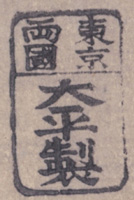 seal reading: 東京 両国 大平製 hon Tokyo Ryōgoku Daihei sei [Marks: pub. ref. 029; seal ref. 24-044 - Marks dates the use of this seal to 1901] |
| Carver | not shown on print |
| Impression | excellent |
| Colors | excellent |
| Condition | good - not backed; full size; paper wrinkling throughout |
| Genre | ukiyo-e; sumō-e |
| Miscellaneous | |
| Format | vertical oban |
| H x W Paper | 14 3/16 x 9 11/16 in. (36.2 x 24.1 cm) |
| H x W Image | 13 7/8 x 9 3/16 in. (35.1 x 22.2 cm) |
| Literature | |
| Collections This Print | Library of Congress Control Number 2008660137 |
last revision:
5/1/2020 created


